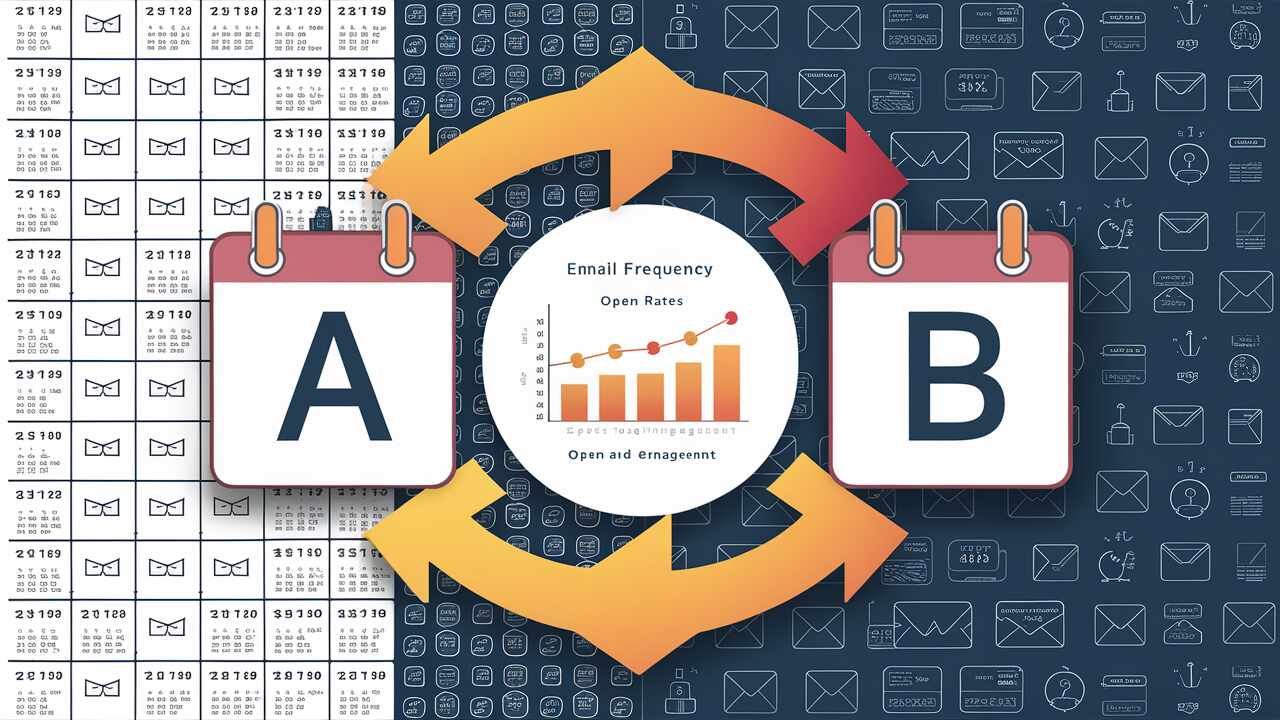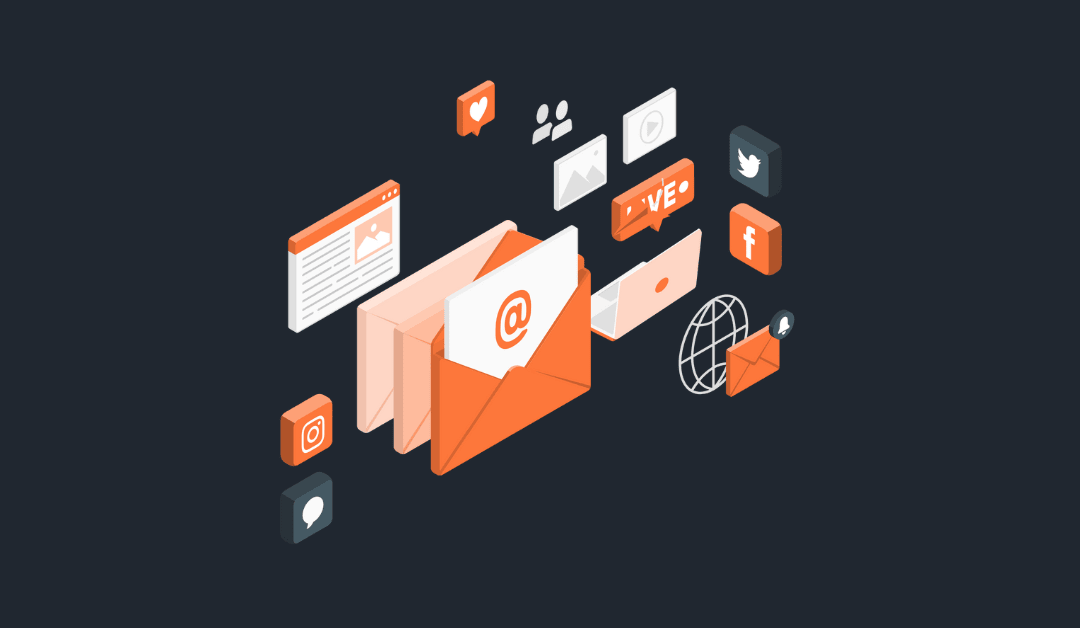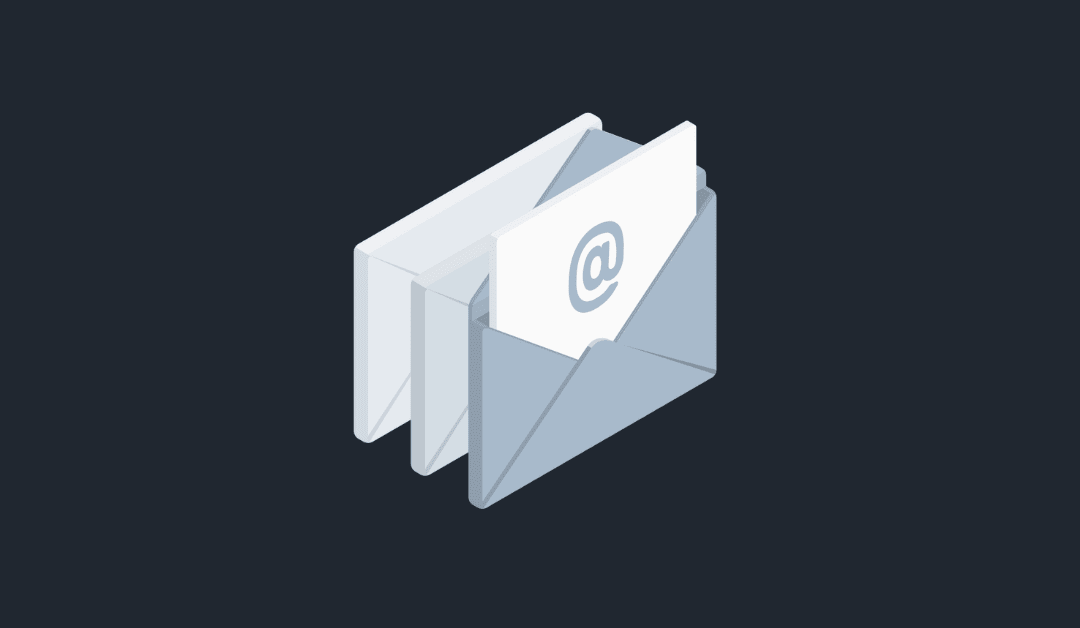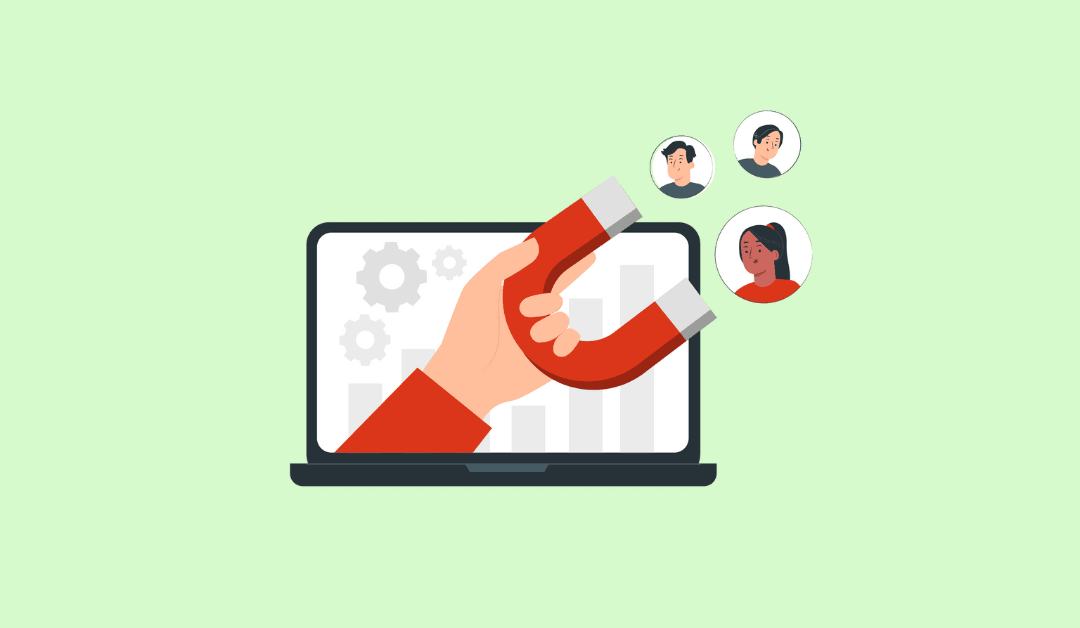We all have our inboxes filled with emails from different organizations including the unsolicited ones and there’s yet another email from a brand we like. But now, you’re slightly annoyed rather than excited. So, you click “unsubscribe,” and just like that, the brand loses a subscriber.
For email marketers, finding the “sweet spot” for email frequency is crucial. Too few emails, and you might fall off subscribers’ radar; too many, and you risk pushing them away.
Have you ever wondered how often you should hit “send” on your email campaigns? Finding the right email frequency can be very difficult, if you send too few emails your audience can forget about you; if you send too many emails they can hit “unsubscribe” faster than you can say “inbox overload.”
Whether you’re sending daily updates or monthly newsletters, striking the perfect balance keeps your audience engaged without overwhelming them. In this article, I will show you email frequency best practices to help you stay top-of-mind with your subscribers without crossing the line into spam territory.
Table of Contents
Why Email Frequency Matters?
Email frequency matters because it’s all about respect, respect for your subscribers’ time and inbox space. If you get it right, your emails will stand out in the inboxes. If you overdo it, you risk becoming the noise they tune out.
Striking the right balance is crucial because your audience’s inbox is a delicate space where too many emails can feel intrusive, while too few might cause them to forget you exist.
Here’s why email frequency matters and how it impacts engagement, brand loyalty, and your revenue:
- Staying Top of Mind Without Becoming a Nuisance
Sending emails at a balanced frequency helps you stay on your audience’s radar, maintaining a relationship that feels natural, not overbearing.
Imagine subscribing to a newsletter that bombards you every day, pretty soon, you’ll be reaching for that unsubscribe button. But, if they only touch base once every few months, you may forget why you signed up in the first place.
- Preventing Email Fatigue
Email fatigue is real, and it can quickly reduce your open rates. If subscribers receive too many emails, they might tune out, and that can lead to reduced engagement and a loss of trust.
- Increasing Click-Through Rates with Timing Precision
Your click-through rate (CTR) can reveal a lot about your email frequency. If you notice a spike in CTRs when you send once a week but see it drop when you increase to three times a week, it’s a sign that less may be more. On the flip side, if your CTR increases with a higher frequency, it means your audience is eager for updates.
- Fostering Brand Loyalty Without Annoying Subscribers
Email is one of the most direct ways to build relationships with customers, but frequency plays a big part in how that relationship feels. If you send emails too often, they may feel your brand is more like a clingy friend than a trusted advisor. But if you space emails well, your subscribers may become anticipated and that can strengthen your relationship with them.
- Boosting Sales by Hitting Key Moments
The right frequency can drive sales, especially during critical times like holidays, sales events, or product launches. Consistent but not overwhelming your readers can help keep your products top of mind.
Just remember, “consistent” doesn’t mean constant. For instance, during a big sale, a daily email may be okay. But outside those periods, scale it back to avoid overkill.
- Building a Better Reputation with ISPs
Mailbox service providers (MSPs) like Gmail and Yahoo factor engagement into inbox placement. If subscribers regularly open and engage with your emails, your emails are more likely to end up in the inbox instead of spam. But frequent unopened or deletions signal MSPs that your emails may not be relevant, and can affect your sender reputation and deliverability.
- Keeping Subscribers Engaged for the Long Haul
An overly aggressive email frequency can shorten your list’s lifespan and can make subscribers unsubscribe at higher rates. However, a well-timed email strategy can keep readers interested over the long term, and extend the lifetime value of each subscriber.
How Often Should You Send Emails?
- Know Your Audience’s Preferences
When setting up an email schedule, start with your audience’s preferences. Studies conducted by Statista show that around 49% of consumers in the USA prefer to receive promotional emails weekly. Some subscribers crave daily updates, while others want less frequent check-ins.
Tip: Start by sending emails 1-2 times per week. Pay attention to unsubscribe rates and adjust accordingly.
If you are into a lifestyle business, you may send weekly updates to keep followers interested, while a financial service should focus on monthly newsletters.
- Test Your Email Frequency With A/B Testing
A/B testing allows you to test different email frequencies to see which performs best. If you’re unsure whether your audience prefers weekly or bi-weekly emails, test both for a month.

You can experiment by splitting your email list into two segments, you can send weekly emails to one and bi-weekly to the other. Analyze the results to determine the best frequency for your business.
- Prioritize Quality Over Quantity
A common mistake is sending frequent emails without new and relevant content. It’s better to send fewer, high-quality emails than to bombard your subscribers with repetitive information.
It’s not about how often you show up in someone’s inbox but about the value you bring each time. Subscribers are bombarded with emails daily, so filling their inboxes with lacklustre messages will only lead to deletions or unsubscribes.
But if you prioritise quality over quantity, you can make each email count by delivering content that’s relevant, engaging, and worth opening. A well-timed, high-quality email is far more effective than a flood of messages that lack purpose or value.
Pro Tip: Before you press that “send,” button ask if the content is genuinely valuable; as people don’t want filler, they want actionable and interesting updates.
- Consider the Email Type and Timing
The type of email also influences email frequency. Promotional emails, newsletters, product updates, and transactional emails each have different cadences.
If you are sending promotional emails, limit your emails to 1-3 times per month to avoid being overly salesy. If it’s newsletters, weekly or bi-weekly works well for most businesses. And if you are sending product updates, monthly email is ideal, unless you have significant, timely news.
Transactional Emails (order confirmations, receipts)should be sent instantly and are not typically part of the regular cadence.
Email Frequency Best Practices for Different Industries
- E-commerce: 2-5 Times per Week
E-commerce brands often have more freedom to send emails frequently, especially with promotions, seasonal sales, and new arrivals. However, stick to a steady schedule and offer enough variety in content.
Why 2-5 Emails Per Week for E-commerce?
E-commerce brands regularly send customers updates about new arrivals, limited-time discounts, seasonal promotions, and restocked bestsellers. For many consumers, receiving frequent emails from their favourite stores is good if the content is relevant, well-timed, and varied.
After all, if someone loves your products, they’ll likely appreciate regular updates. However, to avoid an increase in unsubscribe rates, you should make sure these emails don’t feel repetitive or pushy.
Here’s a common weekly email strategy that many e-commerce brands use to keep customers engaged without crossing into spam territory:
- Promotions and Discounts (1-2 Emails)
Promotions are one of the biggest draws in e-commerce email marketing. Almost 60% of consumers check promotional emails specifically to find deals. When discounts are time-sensitive or seasonal, frequent emails can build urgency, encouraging more opens and clicks.
- New Arrivals or Product Launches (1 Email)
Customers love fresh content, especially if it aligns with their interests. Weekly new arrivals emails can give your subscribers a reason to check in and see what’s new. Highlighting new products keeps your brand top-of-mind and lets subscribers feel “in the loop” on the latest trends.
Pro Tip: Use personalized product recommendations based on previous browsing or purchase history to make the content more relevant.
- Personalized Product Recommendations (1 Email)
Personalization can increase engagement by up to 50% in some cases. Personalized emails help your customers feel like the email is crafted just for them. It’s a soft approach that’s not about pushing discounts but rather introducing them to items they’re likely to enjoy based on their browsing and buying behaviour.
For example: If a customer recently bought a pair of running shoes, follow up with an email recommending related products, like fitness apparel or accessories.
- Abandoned Cart Reminders (1-2 Emails)
The abandoned cart email is a powerful tool in e-commerce. Studies show that almost 70% of online shopping carts are abandoned before purchase (Baymard Institute). Sending a reminder, and sometimes a follow-up nudge with a small discount can bring those customers back to complete their purchase.
You can send an abandoned cart email within an hour of the abandonment, and a second email might follow 24-48 hours later offering an additional incentive, like free shipping.
In e-commerce, 2-5 emails per week can thoughtfully keep your audience engaged without overwhelming them. Just balance promotional emails, personalized recommendations, and relevant product updates to keep customers interested in what’s new and on sale.
However, remember quality, variety, and personalization are your best friends when reaching out frequently.
Pro Tip: Avoid overloading these emails with extra products or unrelated promotions; keep the focus on what they left behind.
- Service-Based Businesses: 1-2 Times per Month
Service providers like agencies, consultants, and coaches often benefit from less frequent emails, focusing on updates, thought leadership, or monthly newsletters.
For service-based businesses, sending 1-2 emails monthly is ideal for staying top-of-mind without overwhelming subscribers. Service-based companies such as consulting firms, salons, accounting agencies, etc. tend to have a different relationship with their clients compared to e-commerce or media brands, which means email strategies and frequency need to be adjusted accordingly.
Why 1-2 Emails Per Month?
Service-based businesses rely heavily on trust, authority, and the relationships they build with their clients. Frequent emails, if not done thoughtfully, can feel intrusive or pushy.
For these businesses, monthly emails work well because:
Clients aren’t shopping around frequently: Unlike in retail, where customers are constantly looking for new products, service-based clients typically come back only when they need specific expertise or help.
Clients want quality insights, not constant updates: Clients appreciate receiving information that is genuinely helpful, timely, and relevant, rather than frequent promotional pushes.
Sending 1-2 emails monthly will allow you to consistently offer value, such as educational content, company updates, or timely reminders while respecting clients’ inboxes.
Here’s how service-based businesses can use their monthly emails to engage their clients effectively without overwhelming them:
- Educational Content or Industry Insights (1 Email)
This type of email is highly effective for building authority and trust. Monthly educational emails will position you as the expert in your field, by giving actionable insights or updates clients care about.
- Service Reminders, Seasonal Promotions, or Client Success Stories (1 Email)
A second monthly email can serve as a soft reminder or feature a seasonal service relevant to clients at that time. For instance, an accounting firm could promote tax preparation services before tax season.
Another great option is sharing client success stories or testimonials, which can be powerful in service-based industries where trust is key. Showing real-world examples of how clients benefit from your services will reinforce your value.
For service-based businesses, sending 1 to 2 emails monthly can strike the right balance between staying relevant and respecting your client’s inbox space.
Each email should provide clear value, whether through helpful tips, success stories, or timely reminders. If you focus on quality over quantity, your service-based company can strengthen relationships, build trust, and increase engagement.
- B2B Companies: 1-4 Times per Month
B2B audiences are often more interested in educational content, like industry news, insights, and actionable tips. A consistent monthly or bi-weekly schedule can keep these subscribers engaged without email fatigue.
B2B relationships are built on trust, authority, and delivering value in a way that helps clients make informed decisions without flooding their inboxes. Since B2B purchase cycles are often longer and more complex than B2C, a strategic email frequency helps nurture leads over time while keeping your brand on their radar.
Why 1-4 Emails per Month for B2B?
B2B clients often require more in-depth information and thoughtful decision-making than B2C customers. With that in mind, B2B companies should aim to balance being informative and helpful with ensuring their emails are neither too light nor too frequent.
Below is the best way to structure your B2B email strategy within the 1-4 emails per month range:
- Monthly or Bi-Monthly Newsletters
A monthly or bi-monthly newsletter is a great way to keep clients in the loop with what’s happening in your business and industry. Newsletters can contain a mix of company news, industry trends, product updates, and educational resources.
This type of email nurtures relationships, keeping clients engaged and aware of how your company’s services are evolving.
- Educational or Thought Leadership Content
Educational content like whitepapers, research reports, and case studies are effective in B2B. An email that promotes or links to this content can be sent once or twice a month, depending on how often you produce it.
Sharing valuable, in-depth resources will keep your company always in the role of a trusted expert.
- Product or Service Updates and Announcements
When you release a new feature or service, an email announcement is a great way to inform current and potential clients. Product updates should be shared sparingly and only when there’s a significant change usually once a month or less so clients know they’ll only receive news when it matters.
- Webinar, Event, or Demo Invitations
If you’re hosting webinars, events, or demos, these are perfect to promote in a monthly email or as an extra email within that month. Webinars and demos help B2B clients see your expertise in action, making them valuable additions to your email strategy.
How to Adjust Your Frequency Based on Engagement
- Monitor Engagement Metrics
Your email metrics can reveal a lot about the effectiveness of your frequency. High open rates and low unsubscribe rates generally indicate that your audience is happy with the frequency of your marketing emails.
- Use Subscriber Feedback
Sometimes, it’s best to go straight to the source and ask subscribers how often they’d like to hear from you. Many email service providers such as Sender, MailerLite, Omnisend, Moosend and HubSpot, make it easy to add a preference centre where subscribers can choose their ideal frequency.
Pro Tip: Send a survey or add a preference centre to allow subscribers to opt for daily, weekly, or monthly updates.
Final Thoughts
Striking the right balance with email frequency is an art that combines understanding your audience, experimenting with different frequencies, and adjusting based on engagement metrics.
If you test different frequencies, stay attuned to subscriber feedback, and focus on quality over quantity, you can strike the perfect balance. Whether you’re reaching out once a week or only around key events, let each email add value, spark interest, and strengthen your relationship with your audience.
When you prioritize the needs and preferences of your subscribers, you’ll see improved open rates, stronger engagement, and a loyal following that looks forward to hearing from you.
Now, it’s your turn! How often are you sending emails, and how is it working for you? Drop your thoughts in the comments below, and if you found this post helpful, feel free to share it to help others improve their email strategy.





0 Comments